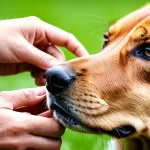Essential Steps for Pet-Proofing Your UK Home
Pet-proofing your home is crucial in ensuring UK pet safety and preventing common accidents. Begin by identifying household hazards such as cleaning products, which can be toxic if ingested, and electrical cords that pets may chew on, risking electrocution. Choking hazards like small toys or loose items also need attention.
Creating safe zones is an effective strategy. Use baby gates or pet barriers to restrict access to kitchens, bathrooms, or staircases where dangers are more prevalent. Establishing these boundaries helps pets navigate the home without exposure to risky areas.
This might interest you : How Can Pet Owners in the UK Best Prepare Their Homes for New Pets?
A practical pet-proof checklist can guide pet owners through a room-by-room safety audit. For example, in the living room, secure electrical wires and remove small objects. The kitchen requires locking away cleaning chemicals and securing trash bins. Bedrooms should be free of small items pets might swallow, and bathroom doors kept closed to avoid exposure to toiletries.
Consistently applying these steps helps maintain a secure environment tailored to your pet’s needs. By focusing on these essential elements of pet-proofing home interiors, UK pet owners can significantly reduce hazards and create a safer living space for their furry companions.
Also read : What Are the Benefits of Pet Therapy for UK Residents?
Managing Household Hazards Unique to the UK
In the realm of UK household hazards, certain risks stand out for pet owners. Many common garden and indoor plants such as foxglove, rhododendron, and laurel are toxic to pets, causing symptoms ranging from vomiting to severe heart issues. Recognising these plants in your environment is crucial for effective pet-proofing home strategies.
Cleaning products pose another significant risk. Choosing pet-safe cleaning products reduces the danger of accidental poisoning. Store all chemicals securely, ideally in high cupboards or locked cabinets, to minimise pet exposure. Be especially vigilant during winter, when substances like antifreeze and de-icers are commonly used outside homes. These can be highly toxic; spills or leaks require immediate cleanup.
Seasonal threats extend indoors as well. Open fires or heaters increase risk during colder months; barriers or screens should be used to prevent burns. Regular inspection of household areas for these specific, seasonal UK pet hazards complements any pet-proof checklist.
By understanding these UK-specific dangers and actively mitigating them, pet owners contribute significantly to UK pet safety and create a safer home environment tailored to British pets’ needs.
Garden and Outdoor Safety Measures
Protecting pets outdoors requires a proactive approach to garden safety centred on pet-proofing your garden and yard. Installing secure pet fencing UK compliant with local standards is essential to prevent pets from escaping and encountering street hazards. Effective fences should be tall enough, with no gaps or holes to deter digging or squeezing through.
Choosing safe garden plants plays a significant role in outdoor pet safety. Avoid common outdoor pet hazards such as foxglove, rhododendron, and any plant known to be toxic to pets. Opt for pet-friendly greenery like lavender, rosemary, or sunflowers that pose no poisoning risk and add aesthetic value to your garden.
Beyond plants and fencing, access to other outdoor hazards must be controlled. Lock or secure garden sheds and garages, which often contain chemicals, tools, or equipment harmful to pets. Ponds or water features should be fenced off or fitted with ramps to prevent accidental drowning, especially for smaller pets or young animals.
By addressing these critical factors, you create a safer outdoor living space tailored to the needs of British pets. Applying these garden safety measures reduces the risk of accidents, escapes, and poisoning, reinforcing your commitment to UK pet safety and comprehensive pet-proofing home protocols.
Considering Pet Type and Breed-Specific Needs
Different pet types and breeds have varying safety requirements, making breed-specific safety a key factor when pet-proofing home environments. For example, dogs tend to chew and dig more, increasing risks from exposed wires or garden fences. Cats, in contrast, are more prone to climbing and squeezing through small spaces, so securing high surfaces and blocking narrow gaps is essential. Small pets like rabbits or guinea pigs require enclosed areas free from predators and toxic plants.
When asked what specific modifications are needed for different pets, the answer is clear: tailor safety solutions to each animal’s behaviour and physical traits. Puppies and kittens are curious and less aware of dangers, so extra supervision and secure boundaries are important. Elderly or disabled pets may need ramps, non-slip flooring, and less stressful layouts to prevent injury. Active breeds might require more secure fencing and chew-proof barriers to avoid escape or ingestion hazards.
In the UK, considering the unique characteristics of popular UK pet breeds protects against common pet hazards effectively. Integrating these considerations into a pet-proof checklist ensures a comprehensive safety strategy. Understanding breed-specific traits not only prevents accidents but also supports the wellbeing of your pet throughout their life stages.






